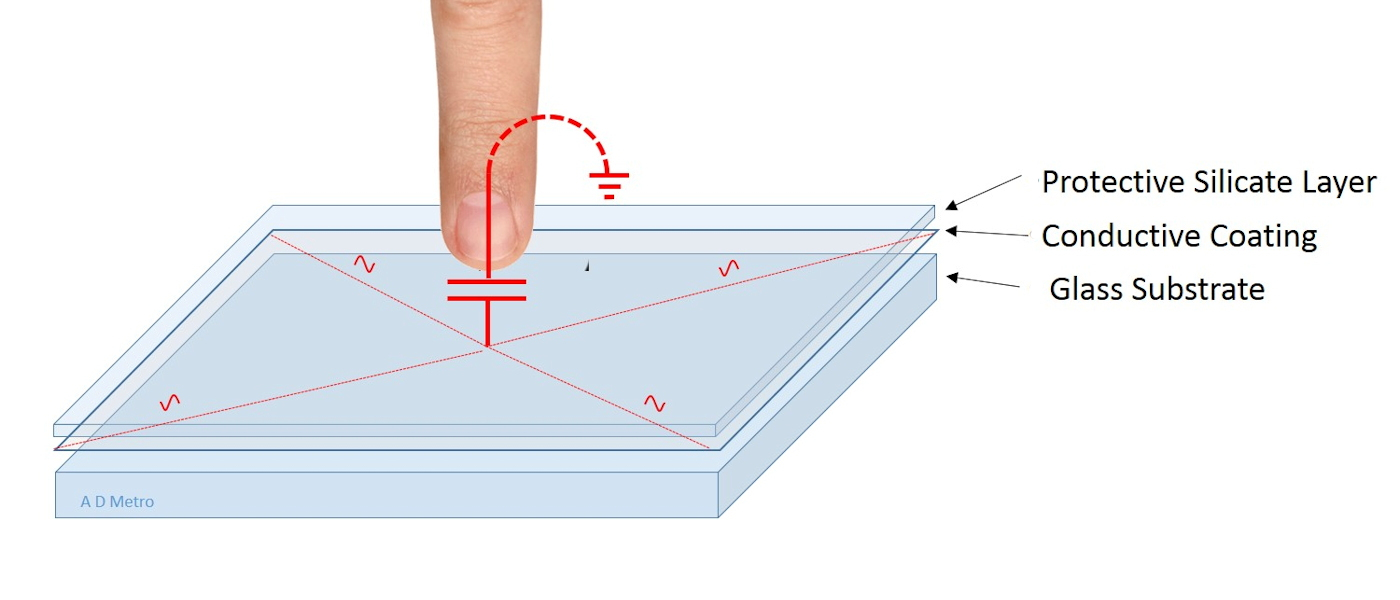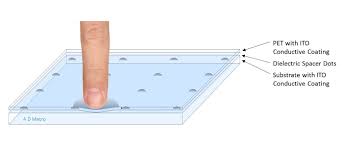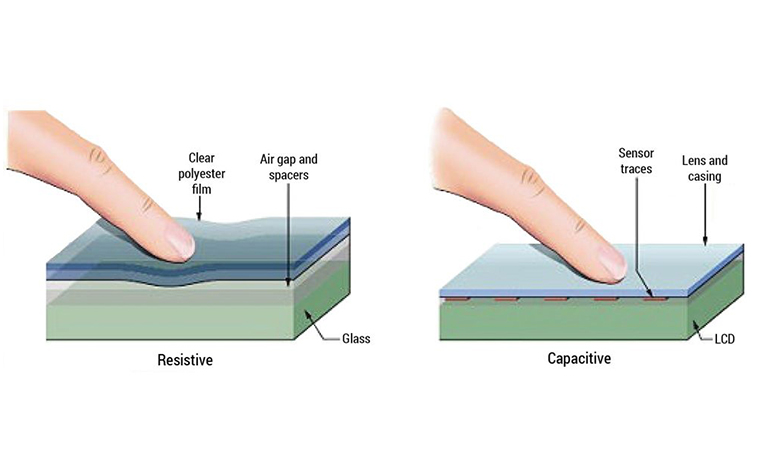Resistive Touchscreen Vs Capacitive Touch Screen
Capacitive and resistive touchscreen phones are amongst the necessary elements in life
With the changing lifestyle, mobile phones hold fundamental importance. But what is most important is the fact that one should thoroughly check on its resistive touchscreen. Hence, the worth of it lies in the fact that it engages human communication. When deciding to buy a phone, one goes through the list of its features. These include typically battery life, camera pixels, memory storage, etc. Something rarely visible in product details.

Difference between Capacitive and Resistive Display
The underlying difference between a capacitive and resistive touchscreen is barely known to layman. Therefore, one must know before purchasing a cell phone. Hence, to simplify it, the capacitive display is on the new and expensive cell and tablets. At the same time, the resistive display works on worn-out models. Resistive touchscreen, apart from being cost-effective, is power resistant, as the name suggests. Therefore, it uses PET film and glass layers. The layers are in a separation by a thin gap or air.
Resistive touch has a functional property. Hence, it holds firm with Indium Tin Oxide (ITO) conductor. The conductor is in place, facing one another. Accordingly, when the screen is in the off mode, the thin air gap prevents the two from getting in touch. Hence, with a touch of a screen with a stylus or with the finger, the resistance forms.
Nevertheless, its sensors increase in voltage. Furthermore, the sensor layer with being active determines the processor activity. The activity builds up the change taking place and thus, actively notifies the touch too.
Benefits of resistive touchscreen
Resistive touchscreen offers multiple benefits to the users. Hence, when choosing to buy a phone, one will preferably go for a resistive touch screen. The features it has to offer to include stylus possibilities. The resistive touchscreen is a dense formation of sensors, so there is an acceptable possibility that any stylus works fine. A fine tip stylus is better off at work with smaller buttons. The touch functions are nice and normal. Furthermore, the resistive touchscreen is a blast from the past.
The rugged handheld manufacturers were somewhat content with the technology. They lead the technological change as it easily fits smaller screens. This matter finely incorporates with the mobile apps. Hence, it works with a fine-tipped stylus and not with a larger fingertip. Furthermore, anyone likely to purchase a resistive touchscreen should know that it comes with a hold-to-zoom feature. The new to standard technology, therefore, easily fits for smaller icon bars. They are finally making it very easy to use.
In comparison to a capacitive touch screen, a resistive touchscreen is cheap. It is the primary reason for the rugged manufactures making the most of it. However, the resistive touchscreen is also affordable. But still, in some instances, resistive touchscreens are in high demand. The user prefers it the most when there are accidental touches. It is the result of falling liquid on the screen, just like rain. The light fluid is not sensible to the screen mode. It enhances the features of resistive technology. It also sensibly paces it in the current market.
Disadvantages of Resistive Technology
Along with the multiple advantages, some factors decline resistive touchscreen technology. It makes it fail in the market. The recession of the product comes when the resistive screen is less responsive. It eventually means that we can suspend activities at any time when the screen stops working or is damaged. Furthermore, the movement is slow. The screen mode is less sensitive. Hence, a need to exert pressure to make it work. Resistive touchscreen work in a single way.
Nevertheless, it is not user-friendly with multiple touches. Hence, it is pretty restricted. It nearly gets challenging to repair in case there is a crack on the screen.
Capacitive Touchscreen
Capacitive touchscreen, unlike the resistive touchscreen, directly makes use of a human finger. It instantly takes away human power. It nearly includes a finger touch and a stylus. The two key elements that are actively responding to change. Hence, it is a decade-old invention. The mode of technology is such that it is responsive to human touch. A capacitive touchscreen is resistive to the human body’s natural conductivity to operate. Hence, the screen comprises a transparent and conductive material.
The touch, when we apply to the glass screen, locks in human power. It happens with the touch of a finger. Hence, when the touch applies to the glass screen, the current inside readily transfer. The conductive glass material is mostly an ITO cover. Therefore, the sensor very delicate. It hence locates the touch position. Furthermore, the sensor can sense even slight touch. It makes the capacitive touchscreen more worthy than the resistive one.
Benefits of Capacitive Touchscreen
The product seems more like a user-friendly technology. A capacitive touchscreen is not bound, unlike the resistive touchscreen. A capacitive touchscreen is reliable when it comes to heavy use. Therefore, the user is quite content to use it. Hence, the ones making heavy use of it do not find it depleted. Unlike, capacitive touchscreen after rich nearly runs down and become unresponsive.
Furthermore, the capacitive screen is rugged than resistive. It, therefore, play well in Archer 2, being its strength. The screen is not prone to any damages and scratches. It plays safe, unlike the resistive screen.

Furthermore, the capacitive touchscreen proves efficient and reliable. No matter how deeply the screen breaks, it will still work at an average pace. It does not happen in the resistive touchscreen. The resistive touchscreen does not function once it breaks down. Therefore, the capacitive touchscreen is reliable for workers as they can continue to put up their tasks well.
A capacitive touchscreen is a multi-touch capability. The system makes it to the registration of multiple inputs. Furthermore, with the system granting permission, one can zoom in on the touch screen. The capacitive touchscreen is a foolproof technology that can better lead future technologies to grow.
Disadvantages of Capacitive touchscreen
The capacitive touchscreen is by far the positive attribute in the technological era. It can adapt to change and is more reliable at the forefront. But there are disadvantages associated with it. Capacitive Touchscreen is way heavy on the pocket. Furthermore, it is susceptible to touch. A slight accidental touch makes it active. Lastly, the view is best visible from the front.
Conclusion
No need to think hard as choosing between the two is not complex. Hence, it somewhat seems that capacitive touchscreen display is making rounds in the market. Even if the capacitive touchscreen is expensive, it does not matter at all. A capacitive touchscreen technology, having a brighter side and an enlightened future of technology, withdraws a capacitive touchscreen. The heavy and reliable use is what makes it stand in the line of technology.
The capacitive touchscreen is something the market and masses are looking forward to the system. It eventually is the result of its reliance. Even if the screen shatters, the capacitive touchscreen will continue to work. Therefore, there is no need to wait for it to get repaired, unlike the resistive touchscreen. Furthermore, the high-touch sensitive screen, sharp picture, and practical knowledge incline the customer to purchase it.
For More Information, Contact Us Today!





